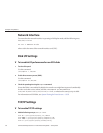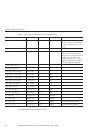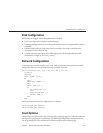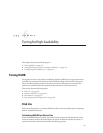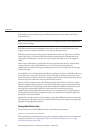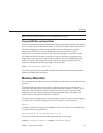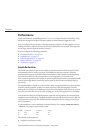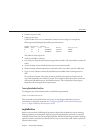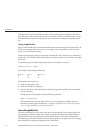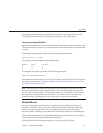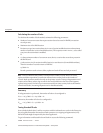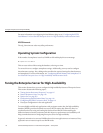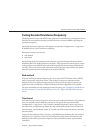
Performance
For best performance, all HADB processes (clu_xxx_srv) must t in physical memory. They
should not be paged or swapped. The same applies for shared memory segments in use.
You can congure the size of some of the shared memory segments. If these segments are too
small, performance suers, and user transactions are delayed or even aborted. If the segments
are too large, then the physical memory is wasted.
You can congure the following parameters:
■
“DataBuerPoolSize” on page 110
■
“LogBuerSize” on page 111
■
“InternalLogbuerSize” on page 112
■
“NumberOfLocks” on page 113
■
“Timeouts” on page 115
DataBuerPoolSize
The HADB stores data on data devices, which are allocated on disks. The data must be in the
main memory before it can be processed. The HADB node allocates a portion of shared
memory for this purpose. If the allocated database buer is small compared to the data being
processed, then disk I/O will waste signicant processing capacity. In a system with
write-intensive operations (for example, frequently updated session states), the database buer
must be big enough that the processing capacity used for disk I/O does not hamper request
processing.
The database buer is similar to a cache in a le system. For good performance, the cache must
be used as much as possible, so there is no need to wait for a disk read operation. The best
performance is when the entire database contents ts in the database buer. However, in most
cases, this is not feasible. Aim to have the “working set” of the client applications in the buer.
Also monitor the disk I/O. If HADB performs many disk read operations, this means that the
database is low on buer space. The database buer is partitioned into blocks of size 16KB, the
same block size used on the disk. HADB schedules multiple blocks for reading and writing in
one I/O operation.
Use the hadbm deviceinfo command to monitor disk use. For example, hadbm deviceinfo
--details will produce output similar to this:
NodeNo TotalSize FreeSize Usage
0 512 504 1%
1 512 504 1%
The columns in the output are:
■
TotalSize: size of device in MB.
TuningHADB
SunGlassFishEnterpriseServer2.1PerformanceTuningGuide • January2009110



